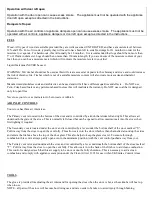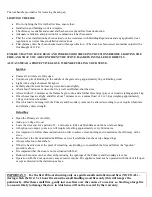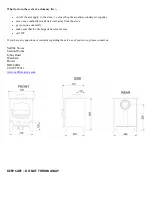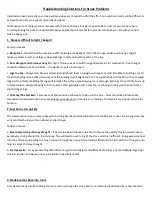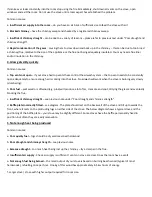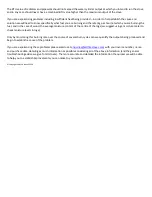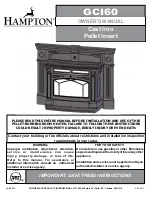
The tool handle provided is for removing the ash-pan.
LIGHTING THE FIRE
Prior to lighting the fire for the first time, ensure that-
Installation and building work is complete.
The chimney is suitable and sound and has been swept and free from obstruction.
Adequate ventilation and provision for combustion air has been made.
That the stove installation has been carried out in accordance with Building Regulations and any applicable local
regulations as well as these installation instructions.
That chimney draw has been checked and within specification. (The stove has been tested at nominal output with a
flue draught of 12 Pa)
ENSURE THAT YOU HAVE READ AND UNDERSTOOD THESE INSTRUCTIONS BEFORE LIGHTING THE
FIRE, AND THAT YOU ARE CONFIDENT THE STOVE HAS BEEN INSTALLED CORRECTLY.
ALWAYS WEAR A PROTECTIVE GLOVE WHEN REFUELLING YOUR STOVE.
Ignition
Ensure all air inlets are fully open
Construct a pile of kindling in the middle of the grate using approximately 1kg of kindling wood
Light with a single chemical firelighter
Partially shut the door but leaving it cracked open slightly
After about 5 minutes or when the fire is well established, shut the door
After a further 3-5 minutes as the flames begin to die, add a further three larger pieces of wood weighing approx 1kg.
Once theses logs are alight, and after about 7 minutes or so, a normal load of 2 or 3 logs weighing approximately
1.2kgs in total can be added
Once this load is burning well, the Primary and Secondary vents can be altered according to your required burn rate
and chimney draw strength..
Refuelling
Open the Primary air vent fully
Add up to 1.2kg of wood
Leave the door ajar for a period of 2 – 3 minutes to fully establish flames on the new refuel charge.
At high power output, your stove will require refuelling approximately every 60 minutes.
It is important to follow these instructions in order to achieve clean burning and to maximise the efficiency of the
stove
Do not leave the fire unattended until flames are well established an the newly charged logs
Always refuel onto hot embers.
If the fire has died out at the point of refuelling, use kindling to re-establish the fire and follow the “Ignition”
procedure above.
It is important that the stove is not overloaded with fuel.
Reduced burn rates can be achieved by reducing the openings of the Primary and Secondary air vents..
Operation with the door open can cause excessive smoke. The appliance must not be operated with the door left open
except as directed in the instructions above.
IMPORTANT
–
For the first 20 hours burning only use gentle small controlled wood fires (NO COAL) –
during which the first 3 x 1 hour fires must be small kindling wood fires only (this will temper the
paintwork). After these small fires, gently increase fires over the course of a week or so. Starting a large fire
too soon is likely to damage the stove in which case will not be covered by the warranty.



